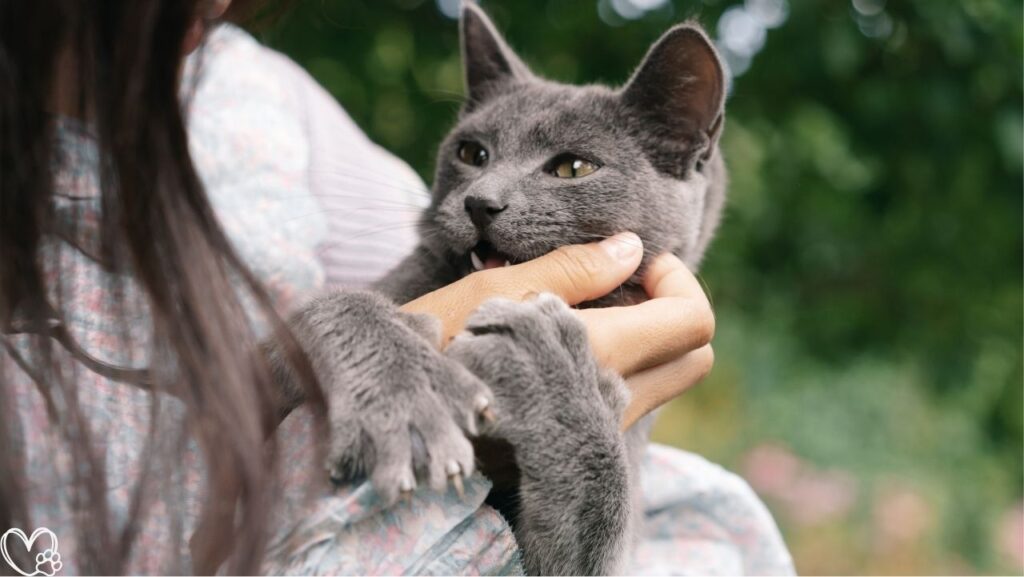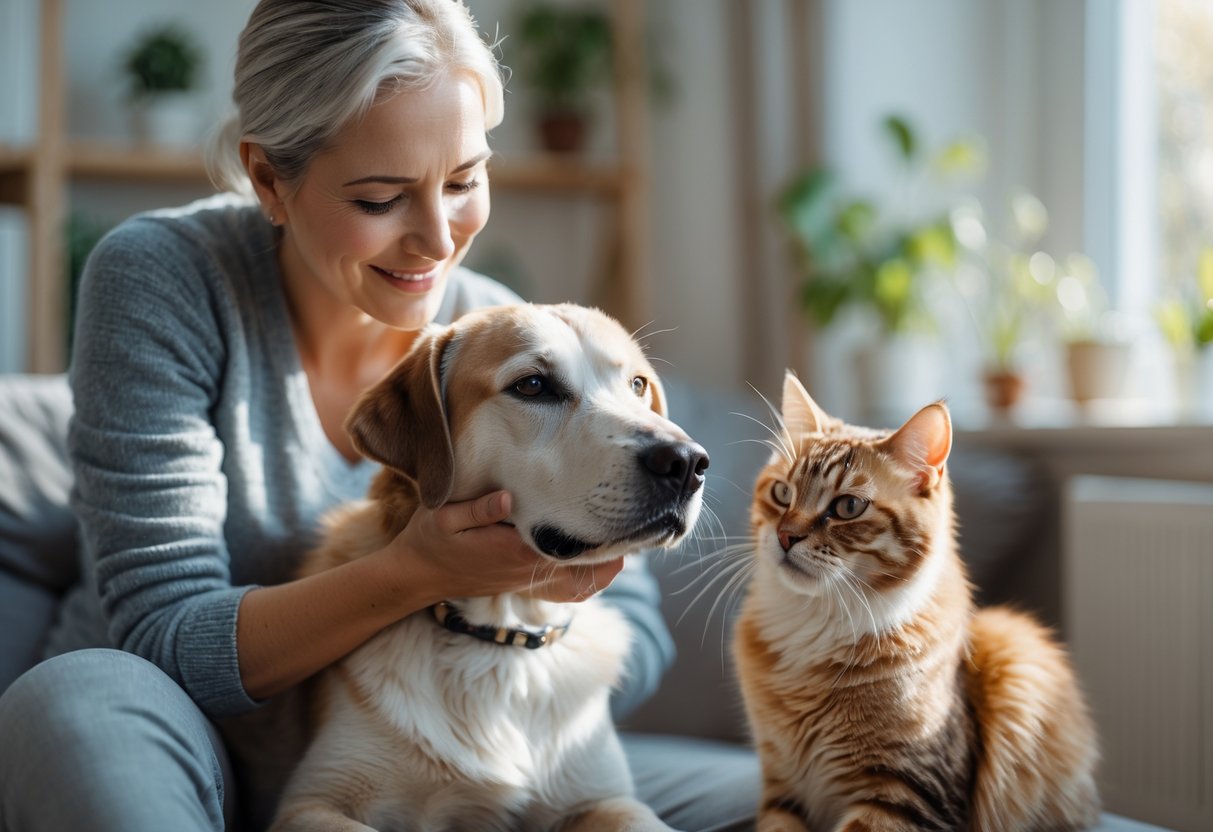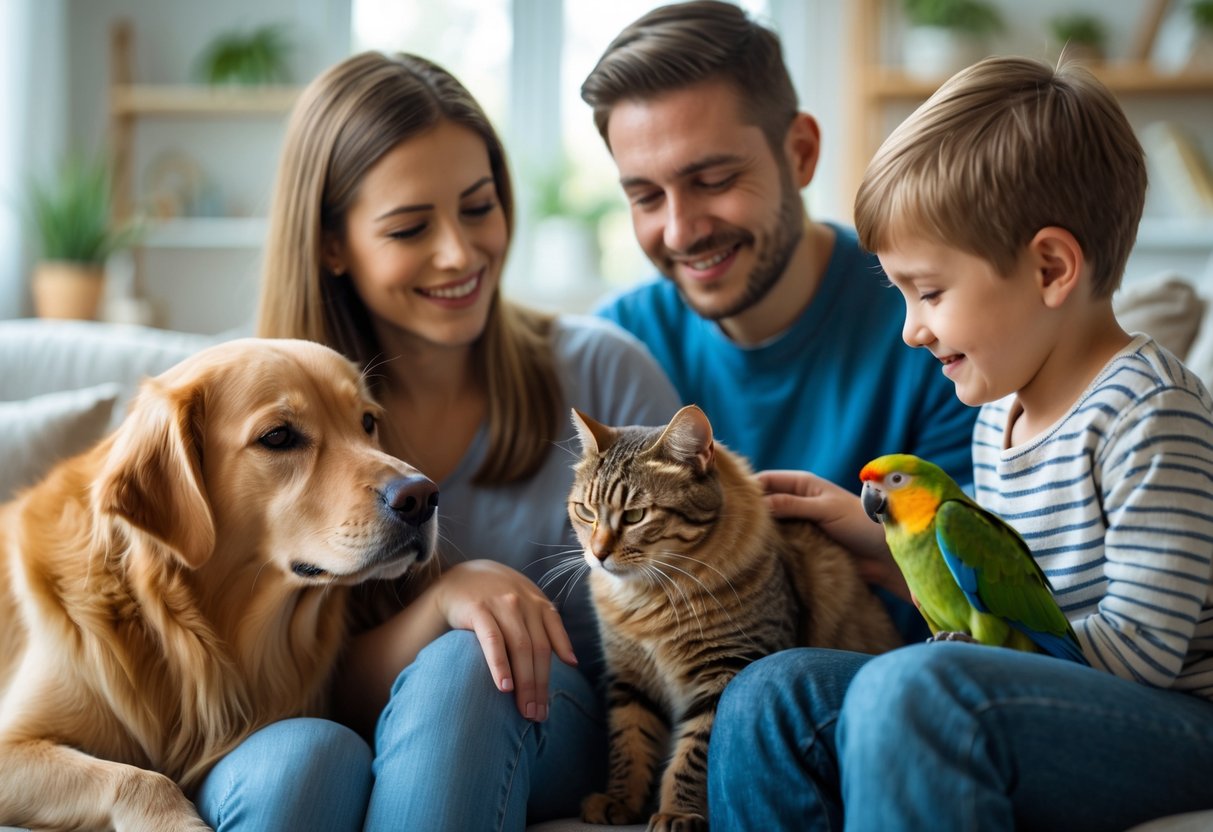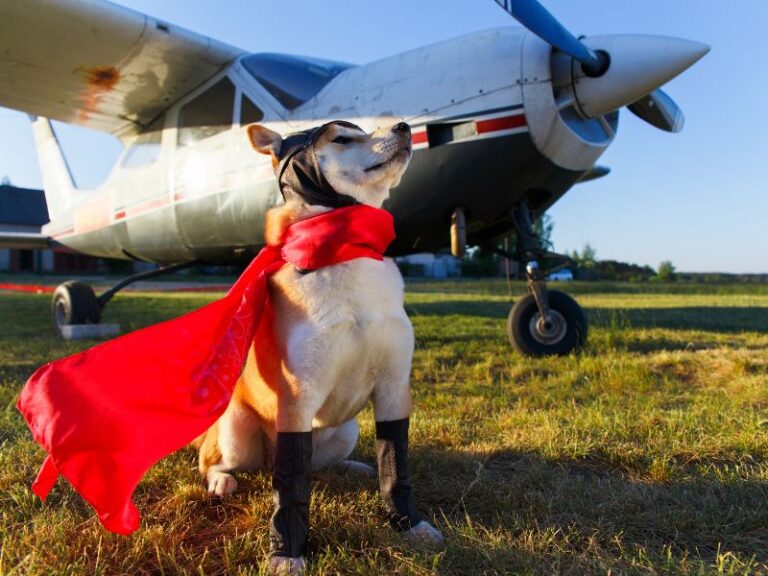You ever catch yourself wondering if your pet actually gets how much you care? Science says they do—especially dogs and cats. They respond to affection in ways that aren’t just about routine or habit.
Turns out, pets experience feelings tied to love through changes in their brains and hormones, kind of like we do. That’s honestly pretty amazing if you think about it.

Research reveals that dogs and cats can feel affection and form strong bonds with their owners, showing signs of emotional attachment and love. Dogs, for example, release oxytocin—the so-called “love hormone”—when they’re with people they trust.
Cats aren’t left out either. They get a little oxytocin boost when you pet them, which suggests they really do feel some form of love and attachment.
Knowing this, it’s a bit easier to see your pet’s behavior as more than just instinct. Their responses to you are shaped by real emotions, built up over years of evolution and bonding. That’s not something you can fake.
Scientific Evidence on Whether Pets Recognize Love
Research shows pets, especially dogs, display clear signs of recognizing love through brain activity, hormone levels, and behavior compared to other animals. The way their brains work and the biological responses involved really help explain why the bond with your pet can feel so strong.
Neuroscience and Brain Activity in Dogs
Brain scans reveal that dogs’ brains react in surprisingly similar ways to ours when they experience affection. When you interact with your dog, areas tied to reward and emotion light up.
It’s almost like your dog’s brain is mirroring the feelings we know as love. Kinda wild, right?
Researchers also noticed that dogs’ brain patterns can sync with humans during bonding moments. That syncing hints your dog isn’t just recognizing your presence—they’re feeling something deeper.
Brain imaging even shows dogs remember human scents tied to good experiences. That’s more evidence they really get love, at least in their own way.
Hormonal Responses and the Oxytocin-Gaze Loop

Oxytocin, the so-called “love hormone,” plays a huge part in the bond between you and your dog. When you lock eyes with your dog, both of you release oxytocin.
This is called the oxytocin-gaze loop. The longer you share that affectionate gaze, the more oxytocin you both get. It’s a feedback loop that just keeps reinforcing your connection.
Honestly, it’s kind of adorable how science backs up what pet owners have always felt.
Comparisons Between Dogs and Other Animals
Dogs really stand out when it comes to recognizing love, mostly because they’ve evolved alongside us. They’ve learned to communicate using eye contact, body language, and even vocal cues.
Other pets, like cats and some birds, do show affection but might not trigger the same brain or hormonal reactions. Dogs just seem to “get” humans in a way that’s pretty special.
How Pets Show and Perceive Love

Pets have their own ways of showing how they feel, and they’re surprisingly good at picking up on your emotions too. These little back-and-forth moments really build trust.
Behavioral Signs of Affection in Dogs
Dogs have a whole toolkit for showing love. Maybe your dog greets you with an all-out body wag when you walk in the door—classic sign they’re happy to see you.
They might lick your face or hands, which is basically their way of saying, “Hey, I care.”
Other signs? Leaning against you, sticking close, or trailing you from room to room. Sometimes they’ll even bring you a toy or a “gift.”
These behaviors aren’t just about wanting food or a walk—they’re about connection. You can really feel it if you pay attention.
Dogs can get thrown off if your facial expressions and tone don’t match up. Like, a smile paired with an angry voice? That’ll confuse them. Shows how closely they’re tuned in to your feelings.
So, do pets recognize love? All signs point to yes—maybe not in the exact way we do, but in their own, very real way. The science is catching up to what pet lovers have always suspected: our animals feel more than we sometimes give them credit for. And honestly, isn’t that kind of lovely?
Emotional Bonding and Owner Recognition
Your dog doesn’t just know you by how you look—it’s deeper than that. They pick up on your feelings, even when you think you’re hiding them.
There’s research out there showing dogs read your emotions through your face and the sound of your voice. It’s honestly kind of amazing how they can sense when you’re happy or when you need a little comfort.
This emotional bond matters more than we sometimes realize. Dogs who live surrounded by genuine care and emotional support usually seem a lot happier—and, frankly, healthier too.
If you want to make that bond even stronger, spend real time together. Talk to your dog in a calm voice, and try to respond gently, even when you’re tired or distracted.
It might sound simple, but these little things build up trust and love over time. Your dog really does notice.
At the end of the day, it’s those everyday moments—shared glances, quiet pats, silly voices—that create something special. Isn’t that what makes having a dog so rewarding?


